Surcote/Surcoat Shenanigans
- Greg
- Urush bithî 'nKi ya-nam bawâb
- Posts: 4497
- Joined: Tue Dec 02, 2008 8:50 pm
- Location: Eriador; Central Indiana
Surcote/Surcoat Shenanigans
Sooo...what's the deal?
The word surcoat/surcote gets thrown around an awful lot, and I can't quite make concrete sense of it. On the one hand, it seems to be a lightweight slitted garment that goes OVER armor and shows heraldry, and on the other hand, it's a heavier, dare I say luxurious classy outer garment for everyday wear, in various classes of society.
Which is it, did both actually exist, and was there a purpose for the former beyond designating so-and-so on the battlefield?
Ready...go!
The word surcoat/surcote gets thrown around an awful lot, and I can't quite make concrete sense of it. On the one hand, it seems to be a lightweight slitted garment that goes OVER armor and shows heraldry, and on the other hand, it's a heavier, dare I say luxurious classy outer garment for everyday wear, in various classes of society.
Which is it, did both actually exist, and was there a purpose for the former beyond designating so-and-so on the battlefield?
Ready...go!
Now the sword shall come from under the cloak.
Re: Surcote/Surcoat Shenanigans
Short answer – they both existed. Long answer – okay, you asked for it...
I prefer to use the spelling “surcoteâ€, simply because “cote†is often used as a synonym for a tunic worn over linens and “sur†means “overâ€. “Surcoat†seems to be a more common spelling, though. Also, the word "tabard" gets thrown around as well, but i've never been quite sure as to where that fits in to the whole picture. It's an old word (with origins ca. 1200-1300), and it seems to be a synonym, but I don't know.

Illustration from Histoire d’Outremer, (British Library Yates Thompson 12), c. 1232-1261

A knight making a gesture of homage, The Westminster Psalter (British Library Royal 2 A XXII, fol. 220), c. 1250
Images of a long sleeveless garment worn over armor seem to start popping up around the 13th century. That’s not to say it didn’t exist before that, but that’s when I can start finding them on Lasdatter.com (an awesome site, btw, and where most of these images are from). As far as I can tell, there was no martial purpose for the surcote, other than to possibly obscure where the body stops and starts to make the torso a less obvious target, similar to how those dueling with pistols in the 19th century would wear big, bulky coats. Maybe someone with more combat expertise knows the answer to that.
As maille gave way to plate, the loose surcote became the more fitted jupon.
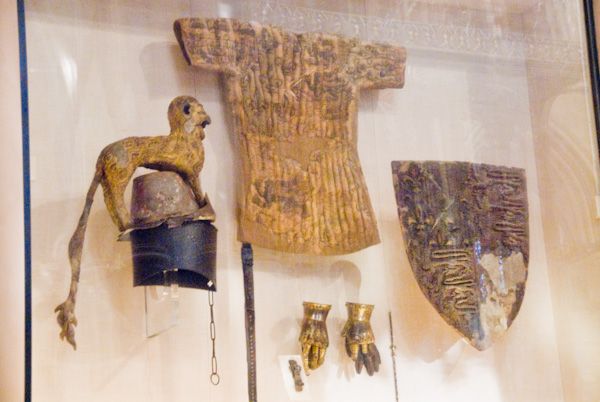
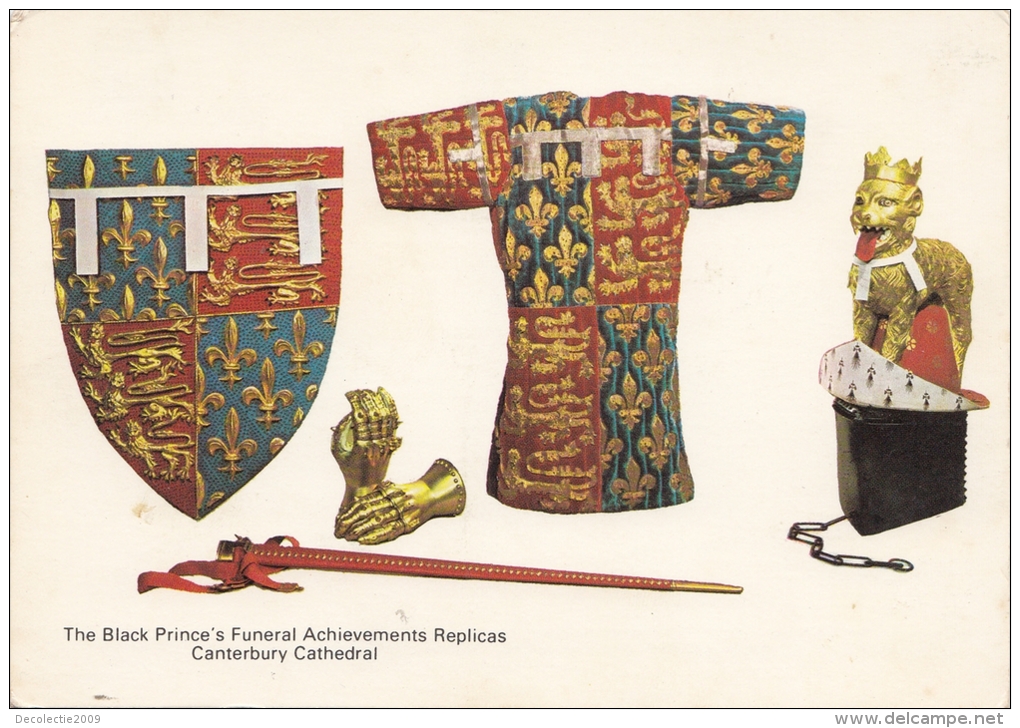
Jupon of the Black Prince, original and reconstruction
So, yes, surcotes were worn over armor. They are not always shown displaying heraldry, but seem to have been used for that purpose at least some of the time.
The surcote also appears in non-military dress, possibly the same way epaulets have been incorporated into civilian clothing, or possibly just because it was practical as an additional layer.
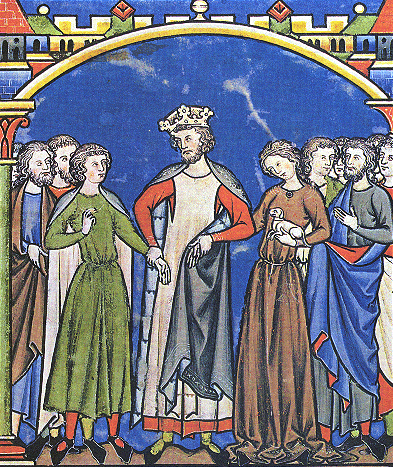
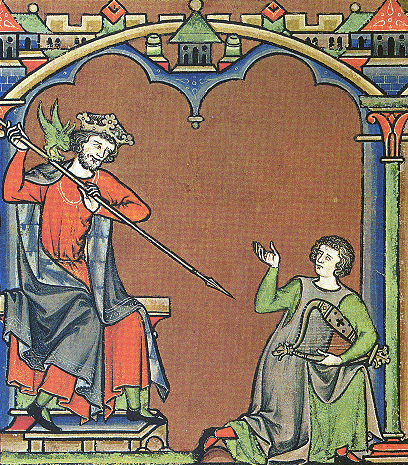
From The Morgan (aka Maciejowski) Bible, ca. 1250
Surcotes appear to fall out of fashion for men around 1300, although we still occasionally see them on laborers into the 14th century. They have become considerably shorter.

From the Luttrell Psalter, 1325-1340
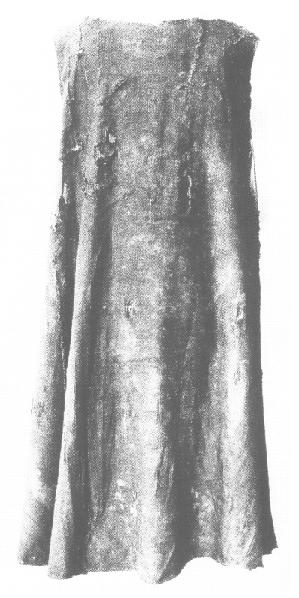
Herjolfsnes no. 37, mid to late 14th century (see here and here for more information0
For the next hundred years or so, surcotes were fashionable for women:

Brass to Sir John and Aleyne de Creke, c.1340-5, at Westley Waterless, Cambridgeshire (Note that the surcote is still being used by men in military dress)
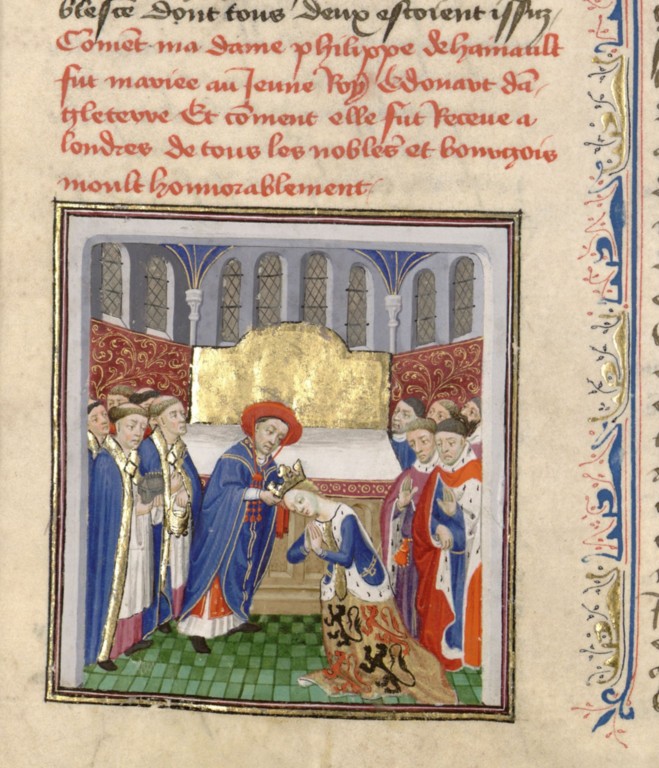
Froissart's Chronicles (BNF Fr. 2675, fol. 27), second quarter of the 15th century
By the mid-15th century in Italy, fashion shifted again and you see luxurious, fur-trimmed, men’s overgowns that seem a far cry from the 13th century surcote.

Detail from “The Adoration of the Magi†by Botticelli, ca. 1475

Detail from Francesco del Cossa, Triumph of May, Ferrara, about 1470
Like I said, you asked for it. And again, in case you missed it, most of the images are from Larsdatter.com, which is an awesome site for information on medieval material culture.
I prefer to use the spelling “surcoteâ€, simply because “cote†is often used as a synonym for a tunic worn over linens and “sur†means “overâ€. “Surcoat†seems to be a more common spelling, though. Also, the word "tabard" gets thrown around as well, but i've never been quite sure as to where that fits in to the whole picture. It's an old word (with origins ca. 1200-1300), and it seems to be a synonym, but I don't know.

Illustration from Histoire d’Outremer, (British Library Yates Thompson 12), c. 1232-1261

A knight making a gesture of homage, The Westminster Psalter (British Library Royal 2 A XXII, fol. 220), c. 1250
Images of a long sleeveless garment worn over armor seem to start popping up around the 13th century. That’s not to say it didn’t exist before that, but that’s when I can start finding them on Lasdatter.com (an awesome site, btw, and where most of these images are from). As far as I can tell, there was no martial purpose for the surcote, other than to possibly obscure where the body stops and starts to make the torso a less obvious target, similar to how those dueling with pistols in the 19th century would wear big, bulky coats. Maybe someone with more combat expertise knows the answer to that.
As maille gave way to plate, the loose surcote became the more fitted jupon.


Jupon of the Black Prince, original and reconstruction
So, yes, surcotes were worn over armor. They are not always shown displaying heraldry, but seem to have been used for that purpose at least some of the time.
The surcote also appears in non-military dress, possibly the same way epaulets have been incorporated into civilian clothing, or possibly just because it was practical as an additional layer.


From The Morgan (aka Maciejowski) Bible, ca. 1250
Surcotes appear to fall out of fashion for men around 1300, although we still occasionally see them on laborers into the 14th century. They have become considerably shorter.

From the Luttrell Psalter, 1325-1340

Herjolfsnes no. 37, mid to late 14th century (see here and here for more information0
For the next hundred years or so, surcotes were fashionable for women:

Brass to Sir John and Aleyne de Creke, c.1340-5, at Westley Waterless, Cambridgeshire (Note that the surcote is still being used by men in military dress)
Froissart's Chronicles (BNF Fr. 2675, fol. 27), second quarter of the 15th century
By the mid-15th century in Italy, fashion shifted again and you see luxurious, fur-trimmed, men’s overgowns that seem a far cry from the 13th century surcote.

Detail from “The Adoration of the Magi†by Botticelli, ca. 1475

Detail from Francesco del Cossa, Triumph of May, Ferrara, about 1470
Like I said, you asked for it. And again, in case you missed it, most of the images are from Larsdatter.com, which is an awesome site for information on medieval material culture.
- Ned Houndswood, Breelander
Richmond Fantasy-Inspired Hiking and Camping (on WordPress and Facebook)
Richmond Fantasy-Inspired Hiking and Camping (on WordPress and Facebook)
- Greg
- Urush bithî 'nKi ya-nam bawâb
- Posts: 4497
- Joined: Tue Dec 02, 2008 8:50 pm
- Location: Eriador; Central Indiana
Re: Surcote/Surcoat Shenanigans
Heck yes I asked for it.
Gosh, I love this forum.
That website is indespensable. WOW. Saved; thanks!
As for the info itself...perfect. I got what I needed and then some. Thanks for taking the time.
Gosh, I love this forum.
That website is indespensable. WOW. Saved; thanks!
As for the info itself...perfect. I got what I needed and then some. Thanks for taking the time.
Now the sword shall come from under the cloak.
- Elleth
- êphal ki-*raznahê
- Posts: 2934
- Joined: Wed Nov 03, 2010 5:26 am
- Location: in the Angle; New England
Re: Surcote/Surcoat Shenanigans
Trust Taurinor to get all the history perfect. 
"Tabard" has more ceremonial/armorial/show-off-my-fancy-colors connotation in what I've read. More "king's man in livery showing the flag" than "knight in knight's garb" if that makes sense. I wouldn't swear that's not an anachronism though. So much of our mental image of the medieval period is filtered through Victorian romanticism and bad King Arthur movies that it's hard to take it on its own terms.
So far as the surcote - I think Taurinor is right that it started out as a military garment - I'd expect both to keep the sun off maille on crusade in hot dry climates, and so everyone could tell who that dude in the armor thirty yards away was. I think it's a good theory that it came back from Crusade with the army and became popular in civilian life. Sort of like how the shemagh has started popping up on soldiers and protester kids wanting to look cool these days, or 1950's bomber jackets, or ladies wearing military-cut riding jackets in the Georgian era.
On the other hand, a 14th c. women's sleeveless surcote isn't THAT different in form from an Iron Age woman's apron dress, so it's entirely possible we're just looking at parallel evolution.
I suspect - but am not expert enough to definitively say - that "surcote" is just a period catch-all term in the same way that "jacket" or "scarf" is.
That is - twenty-first century eyes pick up on the cultural cues that distinguish an young man at Occupy wearing a shemagh from an old lady wearing a ladies' ascot to church - but we might call both by the shorthand "scarf."
Similar thing I think.
"Tabard" has more ceremonial/armorial/show-off-my-fancy-colors connotation in what I've read. More "king's man in livery showing the flag" than "knight in knight's garb" if that makes sense. I wouldn't swear that's not an anachronism though. So much of our mental image of the medieval period is filtered through Victorian romanticism and bad King Arthur movies that it's hard to take it on its own terms.
So far as the surcote - I think Taurinor is right that it started out as a military garment - I'd expect both to keep the sun off maille on crusade in hot dry climates, and so everyone could tell who that dude in the armor thirty yards away was. I think it's a good theory that it came back from Crusade with the army and became popular in civilian life. Sort of like how the shemagh has started popping up on soldiers and protester kids wanting to look cool these days, or 1950's bomber jackets, or ladies wearing military-cut riding jackets in the Georgian era.
On the other hand, a 14th c. women's sleeveless surcote isn't THAT different in form from an Iron Age woman's apron dress, so it's entirely possible we're just looking at parallel evolution.
I suspect - but am not expert enough to definitively say - that "surcote" is just a period catch-all term in the same way that "jacket" or "scarf" is.
That is - twenty-first century eyes pick up on the cultural cues that distinguish an young man at Occupy wearing a shemagh from an old lady wearing a ladies' ascot to church - but we might call both by the shorthand "scarf."
Similar thing I think.
Persona: Aerlinneth, Dúnedain of Amon Lendel c. TA 3010.
Re: Surcote/Surcoat Shenanigans
No problem - it was fun!Greg wrote:Thanks for taking the time.
I've also read that the surcote might have protected maille from from rain, blood, muck, etc to try to prevent rust. It could especially help if the surcote was wool with some lanolin still in it, but I don't know enough about medieval wool processing to say if that would be the case or not.Elleth wrote:So far as the surcote - I think Taurinor is right that it started out as a military garment - I'd expect both to keep the sun off maille on crusade in hot dry climates, and so everyone could tell who that dude in the armor thirty yards away was.
- Ned Houndswood, Breelander
Richmond Fantasy-Inspired Hiking and Camping (on WordPress and Facebook)
Richmond Fantasy-Inspired Hiking and Camping (on WordPress and Facebook)
- Elleth
- êphal ki-*raznahê
- Posts: 2934
- Joined: Wed Nov 03, 2010 5:26 am
- Location: in the Angle; New England
Re: Surcote/Surcoat Shenanigans
Logical - are we certain the military ones *were* wool? I could also imagine a heavier-weight linen working well in that role, if we're talking tough and utilitarian. Not unlike a farmer's smock of the colonial era.I've also read that the surcote might have protected maille from from rain, blood, muck, etc to try to prevent rust. It could especially help if the surcote was wool with some lanolin still in it, but I don't know enough about medieval wool processing to say if that would be the case or not.
Persona: Aerlinneth, Dúnedain of Amon Lendel c. TA 3010.
Re: Surcote/Surcoat Shenanigans
It's hard to say. The extant jupons of the Black Prince and Charles VI are silk, lined ith linen. Those are obviously not representative of the average surcote, though. I agree that linen would work, as well, so I think the physical separation of the maille from the elements would probably be more important than the fiber content.
- Ned Houndswood, Breelander
Richmond Fantasy-Inspired Hiking and Camping (on WordPress and Facebook)
Richmond Fantasy-Inspired Hiking and Camping (on WordPress and Facebook)
- BrianGrubbs
- Silent Watcher over the Peaceful Lands
- Posts: 267
- Joined: Tue Jan 24, 2012 12:59 pm
- Location: Birmingham, Alabama
- Contact:
Re: Surcote/Surcoat Shenanigans
The main argument against the surcote being used to protect the mail from moisture is the fact that it has no sleeves, and in most cases has fairly large arm openings. Mail rusted. There really wasn't much you could do about it. If you did cover yourself completely in something that would keep the rain off, the moisture from all your sweat building up on the inside would still make the mail rust.
Now, the surcote did appear at about the same time that helmets started covering peoples faces. The book I remember reading about armor when I was a kid (http://www.amazon.com/Armor-Sean-Morrison/dp/0690099703) stated that identification was the main purpose of the surcote origionally. Over time, just like any other military apparel (think BDUs nowadays) I'm sure the civilian pupulace started wearing it as well, while missing the whole origional point of the article of clothing...but then these points have already been discussed here!
Brian
Now, the surcote did appear at about the same time that helmets started covering peoples faces. The book I remember reading about armor when I was a kid (http://www.amazon.com/Armor-Sean-Morrison/dp/0690099703) stated that identification was the main purpose of the surcote origionally. Over time, just like any other military apparel (think BDUs nowadays) I'm sure the civilian pupulace started wearing it as well, while missing the whole origional point of the article of clothing...but then these points have already been discussed here!
Brian
The only thing necessary for the triumph of evil is for good men to do nothing.
- Eledhwen
- Thangailhir
- Posts: 1346
- Joined: Mon Jul 21, 2008 10:09 pm
- Location: Nandaromar, Rhovanion
- Contact:
Re: Surcote/Surcoat Shenanigans
Years ago, long years, when I was heavily involved in the SCA, we were doing Crusaders (before it became cool, way before). We discovered, among other things, that surcotes keep the heat off the maille...and in fact help keep one cooler and retain moisture. Mind, we were wearing something closer to the Templar and Hospitaller Cappa Clausa..very voluminous robes in reality, but we had made them fit a little better. Helms were open face with nasal. Later we wore barrel helms and sugarloaf types. Mind we wore full maille..not just a hauberk. 14 gauge steel rings of 5/16ths diameter, butted (at the time; I have since made a riveted one..which I do not wear these days). Integral coif, hauberk, chausses to include the foot, and gloves. Surcote, torse, and mantle. Large heater shields emblazoned with our arms.
Over and over again we found if we went into the hot Summer sun with the maille exposed we fried. The heat and dehydration was pretty fierce. When we wore surcotes and closed helms, we were far cooler and were a lot less dehydrated. They'd tell us to pop our tops, but doing that would expose the maille coif to the sun, so we kept them on and faced into what breeze might be about...cooled us right down. Kind of like refrigeration.
From what I could see, the surcote seems to have resulted from the Crusades. Only later did the become the primary vehicle for display of arms...right about the time closed face helms came into big play. By the way, there are differences between the cyclas, jupon, surcote, and cappa clausa. They all do pretty much the same thing, but the cut of them varies rather strongly.
I don't think surcotes protected from moisture..they do not seem to have been waterproof and in any case, the sweat from anyone out in the sun with this stuff on would soak it anyway. Wringing out the aketon or gambeson after combat was a constant form of amusement...whose had the most water in it.
More likely they were protection from the sun and later, for heraldic display.
FWIW
Eledhwen
Over and over again we found if we went into the hot Summer sun with the maille exposed we fried. The heat and dehydration was pretty fierce. When we wore surcotes and closed helms, we were far cooler and were a lot less dehydrated. They'd tell us to pop our tops, but doing that would expose the maille coif to the sun, so we kept them on and faced into what breeze might be about...cooled us right down. Kind of like refrigeration.
From what I could see, the surcote seems to have resulted from the Crusades. Only later did the become the primary vehicle for display of arms...right about the time closed face helms came into big play. By the way, there are differences between the cyclas, jupon, surcote, and cappa clausa. They all do pretty much the same thing, but the cut of them varies rather strongly.
I don't think surcotes protected from moisture..they do not seem to have been waterproof and in any case, the sweat from anyone out in the sun with this stuff on would soak it anyway. Wringing out the aketon or gambeson after combat was a constant form of amusement...whose had the most water in it.
More likely they were protection from the sun and later, for heraldic display.
FWIW
Eledhwen
Nandalad!
- BrianGrubbs
- Silent Watcher over the Peaceful Lands
- Posts: 267
- Joined: Tue Jan 24, 2012 12:59 pm
- Location: Birmingham, Alabama
- Contact:
Re: Surcote/Surcoat Shenanigans
Good post Eledhwyn. I don't think I've ever talked to someone with that kind of first hand experience with a surcote in the heat! Thanks!
Brian
Brian
The only thing necessary for the triumph of evil is for good men to do nothing.
- Greg
- Urush bithî 'nKi ya-nam bawâb
- Posts: 4497
- Joined: Tue Dec 02, 2008 8:50 pm
- Location: Eriador; Central Indiana
Re: Surcote/Surcoat Shenanigans
That helps me quite a bit too, actually. Thanks again!
Now the sword shall come from under the cloak.
- Eledhwen
- Thangailhir
- Posts: 1346
- Joined: Mon Jul 21, 2008 10:09 pm
- Location: Nandaromar, Rhovanion
- Contact:
Re: Surcote/Surcoat Shenanigans
Welcome. 
I was in Hawaii and the Southwest at the time so had a lot of heat experience. Also at Pennsic XXIV where battles had to be fought in the very early morning to avoid the black flag restrictions of the days, which were ridiculously hot.
The whole thing works sort of this way (I think); you sweat into your aketon/gambeson, heat is sucked up by the maille, wind tends to cool it some. The surcote keeps the sun from heating the maille which would stop it from acting like a heat sink. This was most pronounced in the great helm over coif combination...it really did cool us down to face into the breeze. The only time I took the helm off in the sun when told it took no time to start feeling a little woozy from the heat..the maille was hot to the touch and so adding to the temp. Put the helm back on, face into the wind and in a short bit I was fine again.
No, I am not a professional of any sort, but all of this came from our experiences wearing and fighting in the stuff in temps and humidity in the 100 regions far too often. Perhaps there is a different mechanism, I do not know for sure. I can only report my own experience.
I do think the surcote came about from the Crusades...the 'Turks' and 'Saracens' all wore robes over maille....our own ancestors were not stupid after all..you don't live long in that kind of world if you are a stupid warrior. It is a reason that the peoples of Outremer came to look more and more 'oriental' to their European brethren who were just arriving.
Sorry for the length. It was an interesting period of experimentation with maille and such..and I have ever attempted to experience things as closely as possible to the ancestors. These were a particular eye opener.
Eledhwen
I was in Hawaii and the Southwest at the time so had a lot of heat experience. Also at Pennsic XXIV where battles had to be fought in the very early morning to avoid the black flag restrictions of the days, which were ridiculously hot.
The whole thing works sort of this way (I think); you sweat into your aketon/gambeson, heat is sucked up by the maille, wind tends to cool it some. The surcote keeps the sun from heating the maille which would stop it from acting like a heat sink. This was most pronounced in the great helm over coif combination...it really did cool us down to face into the breeze. The only time I took the helm off in the sun when told it took no time to start feeling a little woozy from the heat..the maille was hot to the touch and so adding to the temp. Put the helm back on, face into the wind and in a short bit I was fine again.
No, I am not a professional of any sort, but all of this came from our experiences wearing and fighting in the stuff in temps and humidity in the 100 regions far too often. Perhaps there is a different mechanism, I do not know for sure. I can only report my own experience.
I do think the surcote came about from the Crusades...the 'Turks' and 'Saracens' all wore robes over maille....our own ancestors were not stupid after all..you don't live long in that kind of world if you are a stupid warrior. It is a reason that the peoples of Outremer came to look more and more 'oriental' to their European brethren who were just arriving.
Sorry for the length. It was an interesting period of experimentation with maille and such..and I have ever attempted to experience things as closely as possible to the ancestors. These were a particular eye opener.
Eledhwen
Nandalad!
Re: Surcote/Surcoat Shenanigans
Holy crap. I read the first question by Greg and got really excited to give an answer (because it fits right into my period of interest), but then Taruinor knocked it out of the park, and Elleth's and Eledhwen's comments totally summed up the rest, haha.
For a (sort of) succinct summary of the subject, however, this is what I've always understood about surcotes/surcoats (which has all been said above, but just to summarize):
- They came about during the Crusades as a means of both keeping the sun off soldiers' maille and also displaying heraldry for easy identification in the field (though they may have existed prior to this, I'm not positive). At this time they were basically just a big rectangle of lightweight fabric (probably linen, hemp, or possibly wool) with a hole cut for the head. Over time they became closed at the sides, and/or split up the front and back below the waist.
- From the Crusades in the Middle East the garment migrated back to France and England around the late 12th and early 13th century, where the civilian population took it up. Just like most cultures during wartime, the civilian fashions of Medieval Europe were heavily influenced by the military fashions of the period, bringing the surcoat into widespread popularity.
- The military application of the surcoat evolved as Taurinor mentioned, and it sort of morphed into other garments in the civilian world over time as well, remaining popular with women long after it seemed to go out of fashion with men (though the design changed somewhat over the years).
- Beyond this, there seem to be various different definitions of the word "surcoat," but generally it is considered to be a long, sleeveless, over-garment. It can be split in the front (like a vest or long waistcoat, in which case the definition sort of crosses over with that of the word "jerkin"), split on the sides, or not split at all. It can be plain or decorated. The word is fairly broad.
So there's my slightly bloated summary, haha. I think I got it all in there, basically.
For a (sort of) succinct summary of the subject, however, this is what I've always understood about surcotes/surcoats (which has all been said above, but just to summarize):
- They came about during the Crusades as a means of both keeping the sun off soldiers' maille and also displaying heraldry for easy identification in the field (though they may have existed prior to this, I'm not positive). At this time they were basically just a big rectangle of lightweight fabric (probably linen, hemp, or possibly wool) with a hole cut for the head. Over time they became closed at the sides, and/or split up the front and back below the waist.
- From the Crusades in the Middle East the garment migrated back to France and England around the late 12th and early 13th century, where the civilian population took it up. Just like most cultures during wartime, the civilian fashions of Medieval Europe were heavily influenced by the military fashions of the period, bringing the surcoat into widespread popularity.
- The military application of the surcoat evolved as Taurinor mentioned, and it sort of morphed into other garments in the civilian world over time as well, remaining popular with women long after it seemed to go out of fashion with men (though the design changed somewhat over the years).
- Beyond this, there seem to be various different definitions of the word "surcoat," but generally it is considered to be a long, sleeveless, over-garment. It can be split in the front (like a vest or long waistcoat, in which case the definition sort of crosses over with that of the word "jerkin"), split on the sides, or not split at all. It can be plain or decorated. The word is fairly broad.
So there's my slightly bloated summary, haha. I think I got it all in there, basically.
Maerondir Perianseron, also called “Mickel,” Halfling Friend - Ranger of the Misty Mountains
- Jonathan B.
- Amrod Rhandir
- Posts: 448
- Joined: Sat Oct 02, 2010 9:57 pm
- Location: South Florida
- Contact:
Re: Surcote/Surcoat Shenanigans
As has been mentioned, it was always my understanding that the surcoat/surcote originated during the crusades as a means of keeping armor cool.
Re: Surcote/Surcoat Shenanigans
When I made the surcote I wear with my kit, it started out as a rectangle of wool with a hole for my head, but I found that I didn't like that very much. That's probably because I tried to use a small amount of cloth, so the sides just overlapped slightly under my belt. With this set up, I found that the sides tended to shift and gap, to the point where the hilt of my sword would actually sometimes end up under my surcote! I ended up stitching the sides closed, leaving a slit from the bottom edge to my waist.Manveruon wrote:At this time they were basically just a big rectangle of lightweight fabric (probably linen, hemp, or possibly wool) with a hole cut for the head. Over time they became closed at the sides, and/or split up the front and back below the waist.
I think this problem would not have happened if I had used a wider rectangle of cloth, since there would have been a larger area of overlap at the sides and it probably would have clung together a little better under my belt. I also wear my sword strapped tight to my hip almost straight up and down, which probably didn't help. A two-point scabbard suspension system at an angle further from vertical would probably avoid the problem as well.
- Ned Houndswood, Breelander
Richmond Fantasy-Inspired Hiking and Camping (on WordPress and Facebook)
Richmond Fantasy-Inspired Hiking and Camping (on WordPress and Facebook)
